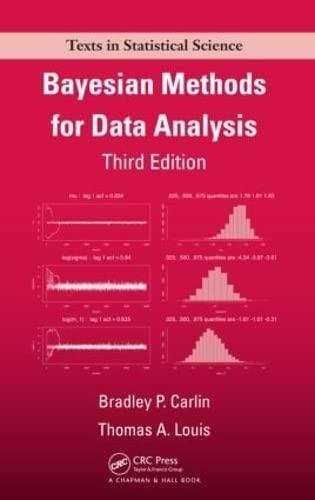10. Table 7.4 gives a dataset of male mortality experience originally presented and analyzed by Broffitt (1988)....
Question:
10. Table 7.4 gives a dataset of male mortality experience originally presented and analyzed by Broffitt (1988). The rates are for one-year intervals, ages 35 to 64 inclusive (i.e., bracket i corresponds to age 34 + i at last birthday).
(a) Use the results of the previous problem to obtain a sequence of graduated, strictly increasing mortality rate estimates. Set the upper bound B = .025, and use the data-based (empirical Bayes) hyperparameter values α = ˆα ≡ r¯2/(s2 r − r¯
k i=1 e−1 i /k), a = 3.0, and b = ˆα/(2¯r), where ¯r =
k i=1 ri/k and s2 r =
k i=1(ri − r¯)2/(k − 1). These values of a and b correspond to a rather vague hyperprior having mean and standard deviation both equal to βˆ = ¯r/αˆ. (In case you’ve forgotten,
αˆ and βˆ are the method of moments EB estimates derived in Chapter 3, Problem 9.)
(b) Do the graduated rates you obtained form a sequence that is not only increasing, but convex as well? What modifications to the model would guarantee such an outcome?
Step by Step Answer:

Bayesian Methods For Data Analysis
ISBN: 9781584886976
3rd Edition
Authors: Bradley P. Carlin, Thomas A. Louis






